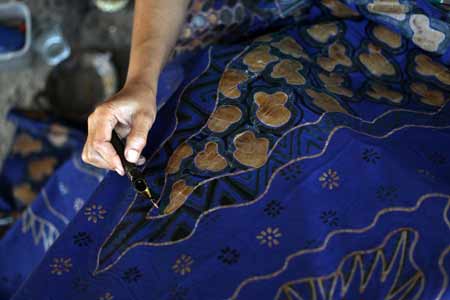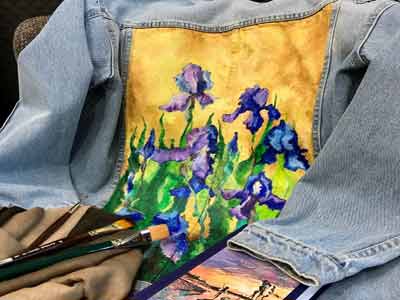Tel: (+39) 055 / 29 46 80 | Email: info@galilei.it
Batik course
- Home
- |
- Batik course

MINISTERO DELL’ISTRUZIONE,
DELL’UNIVERSITÀ E DELLA RICERCA
ITALIAN COURSES
COOKING, ART & CULTURE
TRANSLATIONS
LAST MINUTE
ENROLLMENT
ITALIAN LANGUAGE TEST
Among Italian language schools for foreigners, the Galilei Institute is unique in its exclusive specializing in one-to-one, personalized, full immersion courses specifically designed for professionals and students. Established in 1985, the Galilei Institute attained the highest prestige among language schools in Italy by providing its services to the leading companies of the world. Please take a moment to review our list of clients.
Among Italian language schools for foreigners, the Galilei Institute is unique in its exclusive specializing in one-to-one, personalized, full immersion courses specifically designed for professionals and students. Established in 1985, the Galilei Institute attained the highest prestige among language schools in Italy by providing its services to the leading companies of the world. Please take a moment to review our list of clients.
Location of the school

Batik course in Florence, Italy - all year round
Batik course in Florence
about our batik course in florence
 Our Batik courses in Florence are open to everyone. No special requirements or enrollment in our Italian language courses are necessary to participate. The lessons can be conducted in both Italian and English.
Our Batik courses in Florence are open to everyone. No special requirements or enrollment in our Italian language courses are necessary to participate. The lessons can be conducted in both Italian and English.
Batik is a technique used to color fabrics and other objects, such as vases, by covering the areas that should remain colorless with wax or other waterproof materials, such as clay, resin, vegetable pastes, or starch.
The term originates from the Indonesian words “amba” (to write) and “titik” (dot, drop), referring to the act of drawing. The process of creating batik is called “membatik”.
Initially reserved for noble women, batik evolved from an aristocratic privilege to a national custom, widely practiced throughout the Indonesian archipelago. It has become the language through which Javanese philosophy, highly symbolic in nature, is expressed. Batik is used as a means of communication, reflecting the philosophy’s influence on every aspect of life, even in the smallest details.
Batik is used as a means of communication.
BATIK COURSE - COLD TECHNIQUE
This type of batik does not use a canting tool.
Freehand painting on fabric using brushes and permanent inks is a decorative method that requires skill and mastery. The results are small works of art, unique and unrepeatable pieces.
 For those who may not feel confident in directly painting freehand, it is possible to transfer their design or pattern onto the fabric using either light or dark tracing paper.
For those who may not feel confident in directly painting freehand, it is possible to transfer their design or pattern onto the fabric using either light or dark tracing paper.
The Batik course program can be customized for each student.
••••••••••••••••••••••••••••••••••••••••••••••••••••••••••••
The step-by-step algorithm (for Batik on fabrics) looks like this:
- Transfer the design onto the fabric using a special fabric pencil or disappearing ink pen. Secure the design underneath the fabric to outline the contours.
- Fix the fabric to the frame.
- Apply the resist to the fabric, strictly following the pattern. Each color must be enclosed: this is a mandatory requirement. Then, wait for the resist to dry.
- Apply the dyes using a brush or cotton sponge; the application methods are the same in both cases. And to ensure that the paint spreads evenly, the pouring area must be wet with water.
- Allow the painting to dry and it can be removed from the frame.
THE SUPPORTS WE WILL USE IN THE BATIK COURSE
The material traditionally used for Batik is a lightweight fabric, usually woven with thin and regular yarn, allowing for precise execution of the design. Nowadays, Batik can also be done on paper. The fibers that make up the fabric should accept dyes well, and the best ones are natural fibers, with silk, cotton, and linen being the most commonly used. Only a few artificial fibers such as viscose and rayon can be used.
The Batik technique can certainly be applied to many other types of supports, such as jeans, leather, etc.
During our Batik course, it will be possible to personalize and create items that you can keep, such as bags, pants, or jackets.
Alternatively, we can create entirely new artworks using fabric as the support.
SCHEDULE OF OUR BATIK COURSE
| Afternoon | |
| Monday | 2pm – 6pm |
| Wednesday | 2pm – 6pm |
| Thursday | 2pm – 6pm |
One-to-one, two-to-one, and self-composed group courses can also take place in the morning following your needs.
On request, a master class of one day can be organized. Write us for a personalized offer.
BEGINNING DATES OF OUR BATIK COURSES
One-to-one, two-to-one and personalized group courses can start on any day requested. The small group courses start on the dates listed below.
2025
| Jan | Feb | Mar | Apr | May | Jun | Jul | Aug | Sep | Oct | Nov | Dec |
| 06 | 03 | 03 | 07 | 05 | 02 | 07 | 04 | 01 | 06 | 03 | 01 |
| 13 | 10 | 10 | 14 | 12 | 09 | 14 | 11 | 08 | 13 | 10 | 08 |
| 20 | 17 | 24 | 21 | 26 | 23 | 21 | 25 | 22 | 20 | 24 | 15 |
PRICES IN EUROS per person
| 1 week | 2 weeks | |
| One-to-one batik course | 590 | 1150 |
| Two-to-one batik course | 480 | 920 |
| Small group batik course* | 330 | 590 |
The cost of materials varies depending on the technique and type of work. For this reason, it is not included in the course price and should be paid directly to the teacher.
* If the minimum quota of participants (3 students) is not reached, small group lessons will be converted to two-to-one lessons with two-thirds the number of hours or one-to-one lessons with half the number of hours.
The ancient technique of BATIK is recognized by UNESCO as intangible cultural heritage of humanity (the “Batik Day” is celebrated every year on October 2nd).






